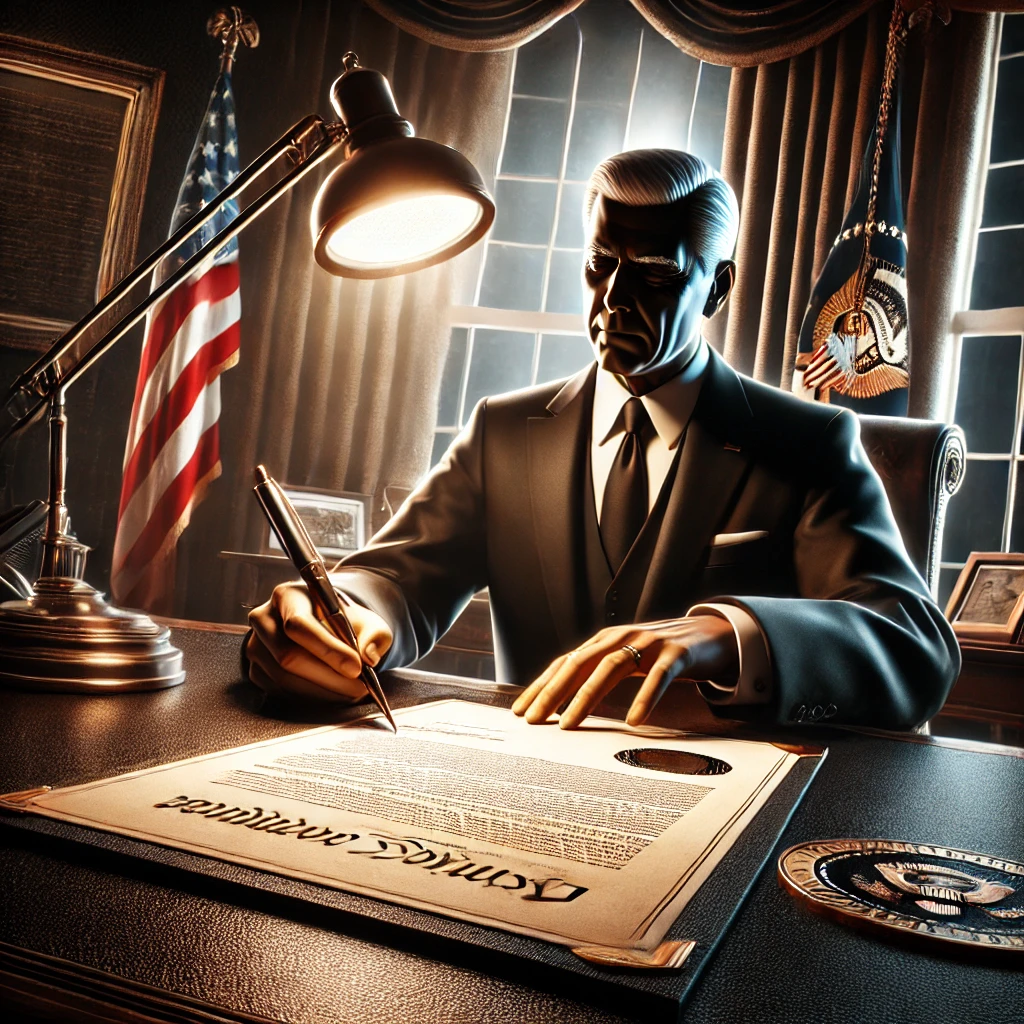In 1952, President Harry Truman’s attempt to seize America’s steel mills through Executive Order 10340 ignited a constitutional crisis that would reshape the boundaries of presidential authority. This watershed moment—and the Supreme Court’s subsequent rejection of Truman’s order—reveals both the extraordinary scope and inherent limitations of one of the presidency’s most consequential tools.
Constitutional Foundations
The legal basis for executive orders derives from Article II, Section 3 of the Constitution’s “Take Care Clause,” which mandates that the president “shall take care that the laws be faithfully executed.” While early presidents issued various directives and proclamations, the systematic documentation of executive orders didn’t begin until 1907, when the State Department began numbering them retroactively to 1862.
Types of Presidential Directives
Executive orders represent just one category of presidential directives, each serving distinct purposes:
- Proclamations address ceremonial matters and public announcements
- Presidential Memoranda guide internal executive branch operations
- National Security Directives shape foreign policy and national defense
- Executive Orders, uniquely numbered and published in the Federal Register, direct federal agencies in executing established laws and policies
The Modern Era Takes Shape
The early 20th century marked a dramatic expansion in the use of executive orders. Theodore Roosevelt issued 1,081 orders, leveraging them to establish national forests and implement Progressive Era reforms. During the Great Depression and World War II, Franklin D. Roosevelt’s unprecedented 3,721 executive orders fundamentally transformed federal governance.
Defining Constitutional Limits
The Supreme Court’s landmark 1952 decision in Youngstown Sheet & Tube Co. v. Sawyer established crucial boundaries for executive authority. Justice Jackson’s influential concurring opinion created a three-tiered framework for evaluating presidential power:
- Maximum Authority: When the president acts with congressional authorization
- Intermediate Authority: When Congress remains silent
- Minimum Authority: When presidential actions contradict congressional will
Contemporary Usage
Modern presidents average approximately 68 executive orders annually, employing them to:
- Direct federal agency actions
- Execute foreign policy decisions
- Set regulatory priorities
- Address national emergencies
This powerful tool’s flexibility is both its strength and limitation—each new administration typically reviews and often reverses their predecessor’s orders, making them potent but potentially temporary instruments of governance.
Looking Forward
Executive orders exemplify an enduring tension in American democracy between efficient governance and constitutional checks and balances. While they enable decisive presidential action, particularly during crises, their increasing use as a mechanism to circumvent congressional gridlock raises important questions about executive power concentration.
Understanding executive orders—their distinct role, limitations, and impact—becomes increasingly vital as they continue to shape the relationship between America’s executive branch and other governmental institutions. Their evolution reflects not just changing presidential priorities, but the ongoing adaptation of American governance to modern challenges.
